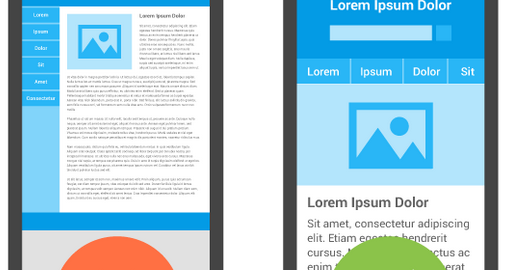Sometimes, it’s hard to take SEO advice seriously. It’s not that you don’t want to improve your site’s search rankings. It’s just a matter of all of the myths out there. It’s hard to separate fact from fiction, so you’re hesitant to take SEO advice. Make things easier on yourself by looking at some must-see experiments.
These experiments separate fact from fiction so you know exactly what you need to do to get more out of your website.
SEO Lesson #1: Using HTTPS Isn’t Necessary
Back in 2014, Google announced that it was going to start using HTTPS as a ranking signal, and site owners rushed to make the conversion. They didn’t want to take a hit in the rankings, so they converted to HTTPS, even if that type of security wasn’t necessary for their websites.
The experiment
As sites rushed to make the conversion, seoClarity decided to see if it was worth the effort. The company conducted a study on HTTP versus HTTPS, and the results are staggering.
The study found a slight dip in rankings for sites that converted to HTTPS. The dip is so small that it’s insignificant, so not making the conversion won’t actually hurt your rankings. At the same time, converting to HTTPS won’t help your rankings, either. Quoting their words –
Our research shows that small benefits can already be seen with Google’s display of mobile-friendly URLs within the search results
What it means to you
That means that if you have a site for a small business or a blog, it doesn’t make sense to invest in an HTTPS connection. Stick with your HTTP connection. You’ll get the security that you need, and you won’t get penalized in the rankings.
SEO Lesson #2: Mobile-Friendly Is a Crucial Ranking Factor
In 2015, Google unveiled its mobile-friendly update.
The update affected search rankings on mobile devices. A lot of site owners thought that as long as they continued to provide great content, they wouldn’t get hurt by the update. They’d still get a solid ranking, even if their sites weren’t mobile-friendly.

“We’re boosting the ranking of mobile-friendly pages on mobile search results. This update affects only search rankings on mobile devices.” Says Google.
It turns out that they were wrong.
The experiment
Stone Temple Consulting conducted a study on the Mobile-Friendly update’s impact. It determined that almost 50 percent of non-mobile-friendly websites dropped in the search engine results.
That would make you think that mobile-friendly websites saw a huge increase, but that wasn’t the case. Just over 30 percent of those sites saw a gain while over 25 percent saw a loss. While that seems strange, it’s because most of the sites already had a good ranking, so they didn’t have room to move up.
What it means to you
The takeaway here is that you have to make your site mobile-friendly. There are lots of ways to accomplish this. You can make a mobile version of your current site with Duda Mobile or another tool, or you can incorporate responsive design into your existing site. Plugins are also available to make your site mobile friendly.
The good news is that Google crawls sites as soon as they become mobile-friendly, so if you have experienced a dip in the rankings, you can get back up there as soon as you make your site mobile-friendly.
SEO Lesson #3: Your Competitors Can Harm Your Rankings
Google has stated that there is almost nothing a competitor can do to harm your rankings, but that’s not true.
The experiment
SEO company Tasty Placement launched a study and created an SEO-friendly website that ranked number three in the search results for “pool cleaning Houston”. Then, it pointed thousands of low-quality links at the site. It didn’t take long for the site to move down to number 14 in the rankings.
Goralewicz SEO Agency found that competitors can use various techniques to sabotage rankings. The researchers created a bot to click on sites that had a certain keyword. At the same time, the bot avoided the researchers’ site. This hurt the site’s click-through-rate, which affected its ranking.
The company also found that competitors can overload servers and fake a poor user experience to hurt the rankings.
What it means to you
Unfortunately, there is not a lot you can do about these tactics, with the exception of using the Disavow Tool to remove negative links. You can also put out as much positive information you can to combat the false negative posts.
SEO Lesson #4: Click-Through Rate Is a Ranking Factor
Google hasn’t confirmed that clicks play a role in search engine rankings, but that doesn’t mean that they don’t.
The experiment
Rand Fishkin from Moz conducted an experiment (starts at slide #88) that shows that click-through-rates (CTR) have a huge impact on where your site sits when people comb through the results.
Fishkin reached out to his followers for their help in running a test. He had people search for a keyword and click on a link for his blog. The combination of the keyword queries and clicks boosted his position from number 7 to number 1 in the rankings.
What it means to you
This is great news for anyone who has a webpage that ranks for various keywords. You can improve your site’s rankings by improving your CTR at the search results page.
SEO Lesson #5: Number 1 Is No Longer the Top Spot
Number 1 has always been the top spot, but that has all changed, thanks to Google’s Rich Answers. Rich Answers is Google’s attempt to provide answers to questions without making people click through to websites. These answers display on the top of the search results, meaning that if your webpage ranks number one for a search query, and you don’t have the number one spot anymore, as long as Google also displays a Rich Answer for that query.
At first, this wasn’t very common, as Google didn’t display answers for very many queries.
Now, though, Google is using Rich Answers more and more.
The experiment
According to Stone Temple Consulting, Rich Answers was used for 22.6% of all queries in December 2014 and 31.2% of all queries in July 2015, and that number is expected to continue to rise. Google is also playing around with the way that it displays these answers, with a 778.6% jump in answers that include titles and a 75.3% increase in answers with images.

Here’s where it gets even worse. Depending on a user’s screen resolution, Rich Answers can bump a website underneath the fold, even if it is technically in the first position.
What it means to you
The question is, then, what can you do to regain the first position? The answer is, unfortunately, not much. Make sure that you rank in other search engines, like Yahoo! and Bing, as they don’t use Rich Answers. Other than that, hope that people scroll past Rich Answers and down to your website.
Bottomline
These experiments have one thing in common. They prove that you shouldn’t believe everything Google says. Instead, dig deeper and find the information you need to make your site rank better.
Digital & Social Articles on Business 2 Community(66)







